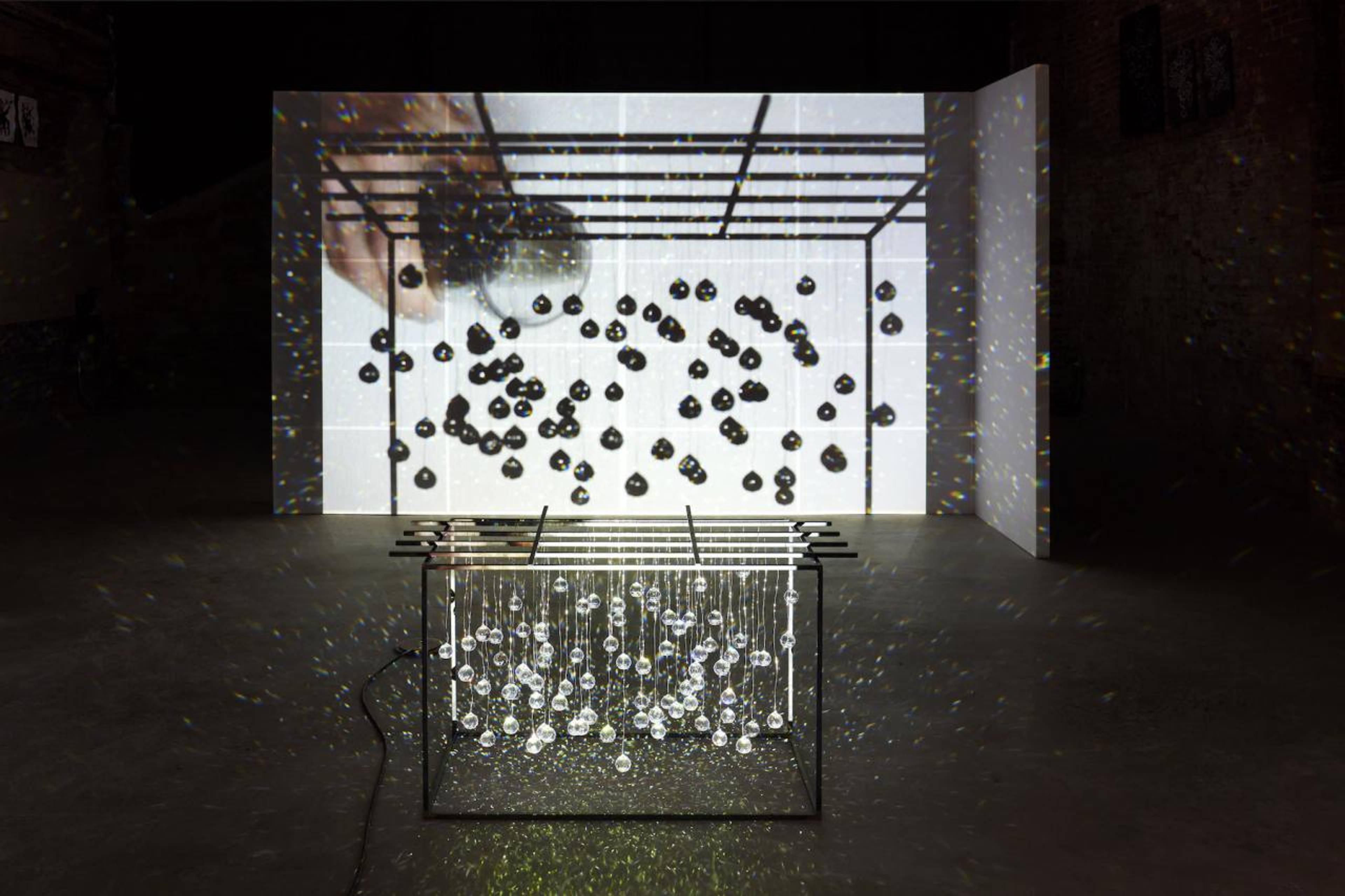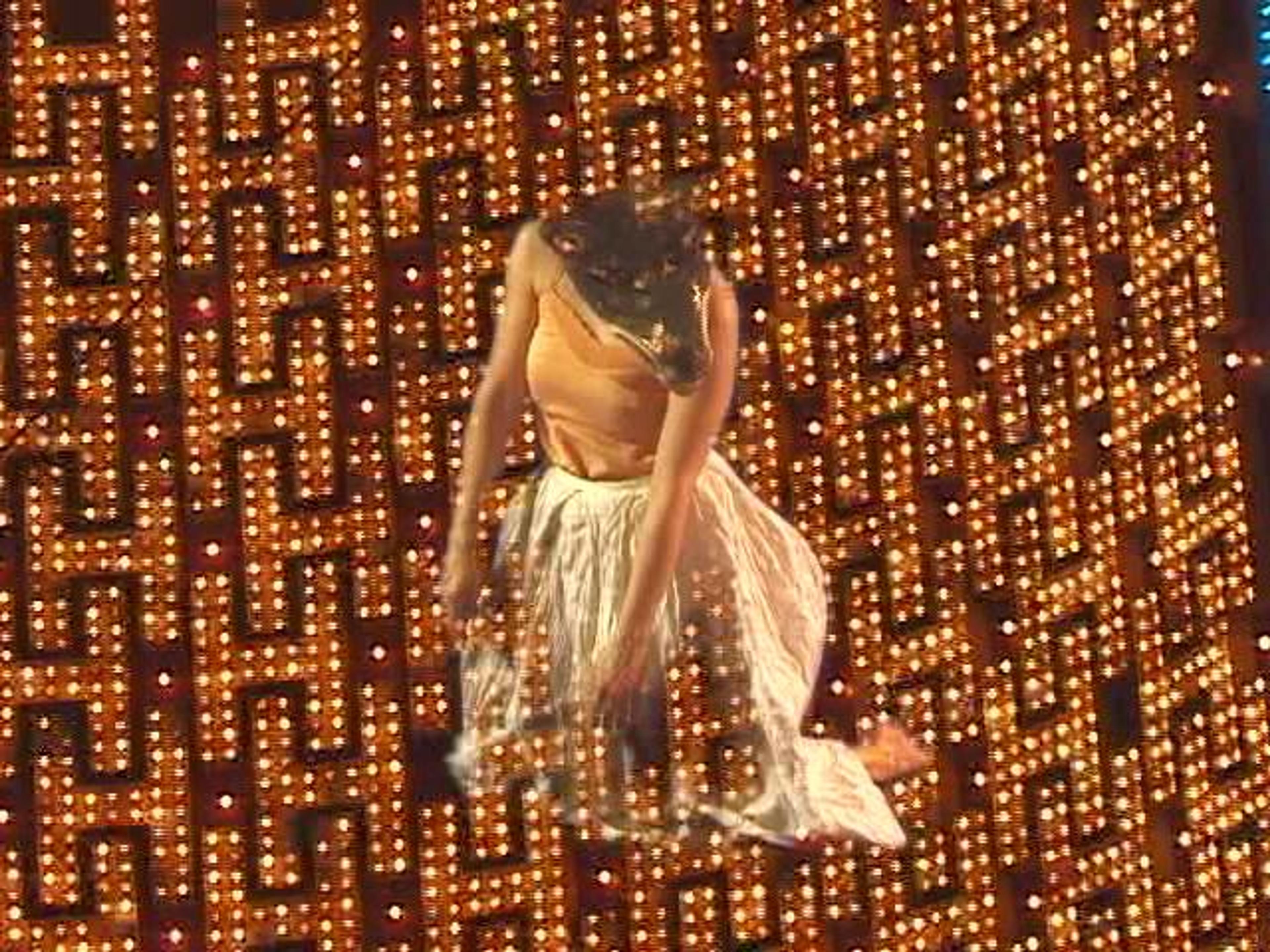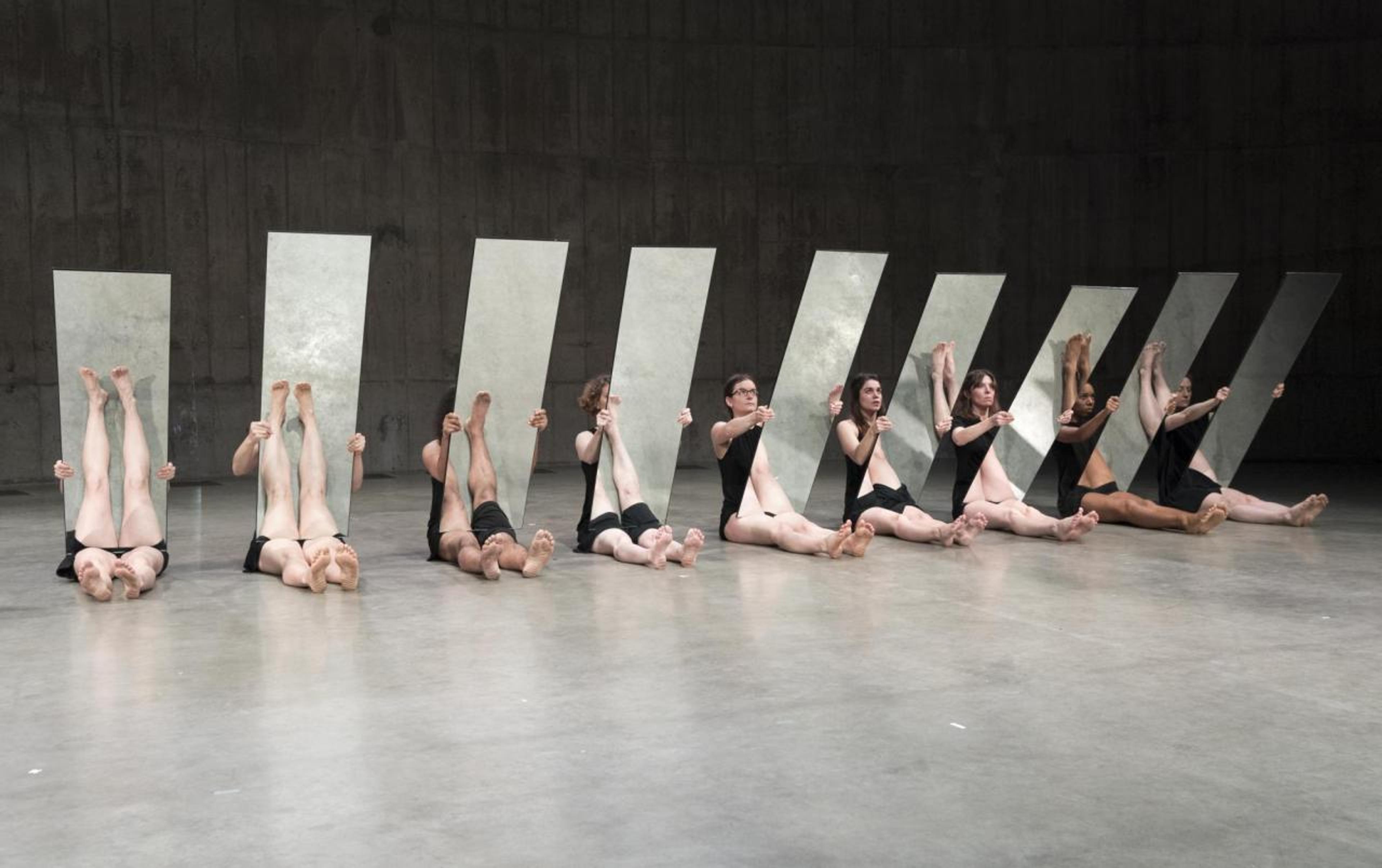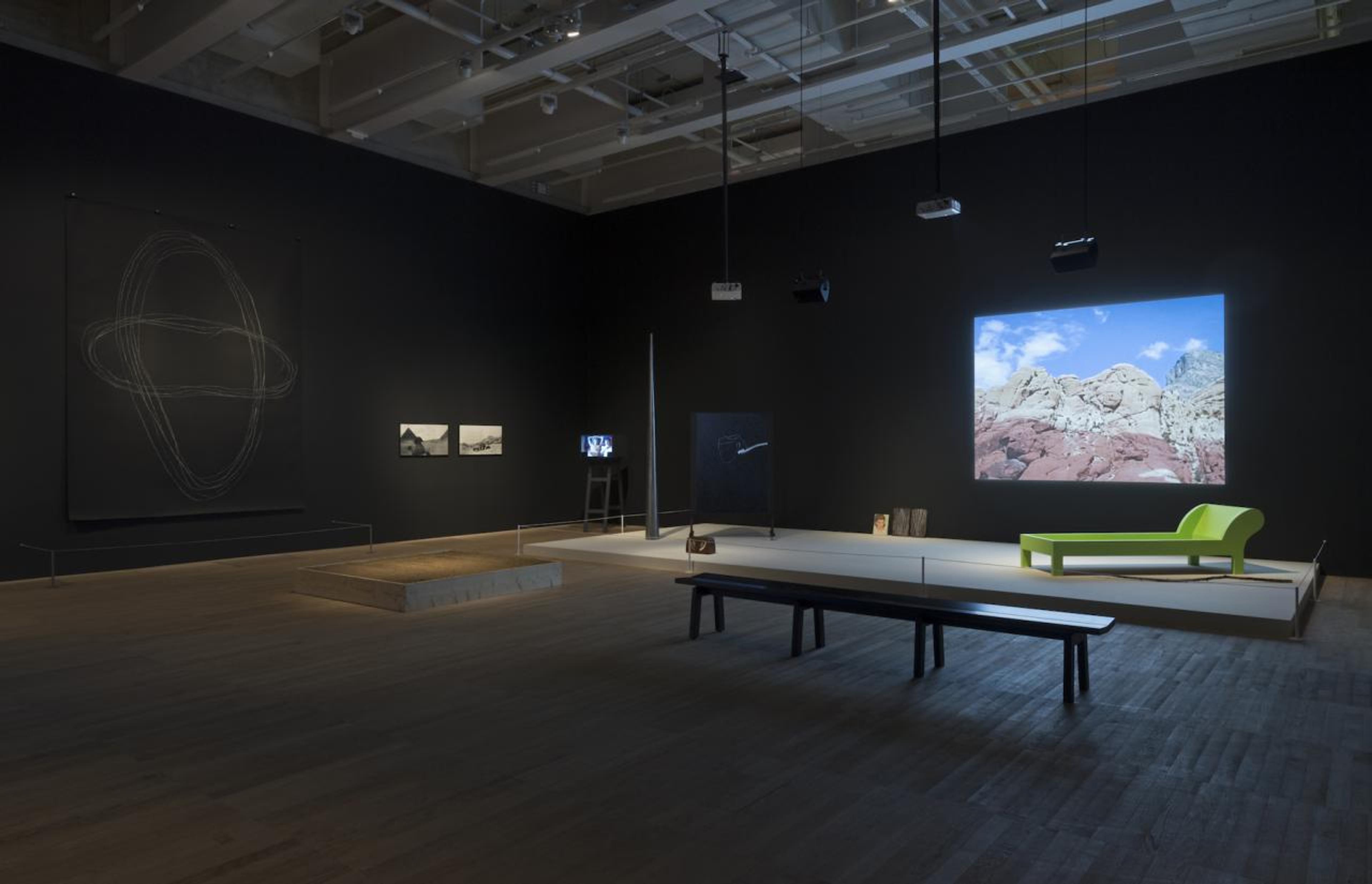The curators of Joan Jonas’ retrospective are at pains to tell you she is a Very Important Artist. Which, obviously, is the least interesting thing for an art exhibition to tell you. The informational blurb is full of the requisite language – “pioneer”, “hero to younger artists” – and the flow of the show, situated in Tate Modern’s new extension, opens reverentially with a display of props from her early performances: wooden animals and papier-mâché masks that Jonas has used since the 1960s in video happenings. These are seductive in their own right and nod to the artist’s mix of hippyish mysticism with her interest in nature, the human body, and light, occasionally even comedic, touches on performance that have gained her swathes of followers. Yet, it seems a static introduction to an artist whose work is characterised by fantastic energy.
The inauspicious beginning continues in the second room with black-and-white photographic documentation of her early work, posters, and more props relating to embryonic performances such as Organic Honey's Visual Telepathy (1972), in which Jonas creepily donned a doll-like mask as a study in artifice and masquerade. However, these could have easily been stripped away, as they clutter the main attraction: The Juniper Tree , an installation from 1976 (though this is a reconstruction from 1994). Presented like a stage set, with footlights casting their beams on a kimono hung from a step ladder and a series of red and white prints of monstrous faces on silk, it feels like we’ve stumbled upon a performance either yet to come or long finished. This is an important work of Jonas’, as she deftly suggests the theatrics she’s known for without presenting any action per se, but installed here it only adds to my impatience to see the large-scale video installations for which she is most beloved.
Joan Jonas The Juniper Tree 1976, reconstructed 1994
When we are finally allowed to immerse ourselves in the weird world of Jonas, the exhibition picks up. Volcano Saga , a 1989 twenty-eight-minute-long video work in which two actors perform the thirteenth century Icelandic folk tale of a woman named Gudrun and a soothsayer who helps navigate her dreams, is the artist par excellence. Nothing quite makes sense but it’s easy to be happy as the dialogue and superimposed footage of the Icelandic landscape wash over you. Glass Puzzle II (1974/2000), in which Jonas and the artist Lois Lane mirror each other’s gestures, is a study of female subjecthood and as gorgeous in its strangeness as it is pointed in its body politics. Double Lunar Rabbits (2010), presented on two curved screens in parallel to each other, is rambunctious and silly (in the best possible way), featuring a woman in animal masks prancing the streets of Fukuoka and based on the Pan-Asian myth about a rabbit living on the moon.
Joan Jonas Video still of Wolf Lights, The Shape, the Scent, The Feel of Things. (2005) © 2018 Joan Jonas : Artists Rights Society (ARS), New York : DACS, London
One of the truly great art experiences I had last year was at Reykjavik’s Living Museum, which hosted a show by Jonas. In that space the artist’s videos bled into each other, sound and imagery competing and overlapping, an intoxication of the senses. The American artist has recently been recast as addressing the Anthropocene, and in Iceland this was communicated through the sense of disorientation it imbued. Visitors were swept up into the strange otherness of Jonas’ environments, taken to a world of dreams that seemed to run parallel to our own with Shaman Jonas as our guide. At the Tate this sense of overwhelming intimacy with Jonas’ videos is lost. In the same way, both the Living Museum and Tate decided to include dozens of Jonas’ paper kites, which the artist found during a trip to Hanoi, yet where in Reykjavik they felt like an invasion, in London they are lost, easily ignored amongst the number of works in this retrospective and Tate’s cavernous new building. The second part of the London show, held in the Tanks space, captures something of the intensity of Jonas’ work, yet still, in the curators’ bid to canonise the artist, it is easy to just stand in front of each object in turn, dutifully receiving an art history lesson.
Joan Jonas
Tate Modern
14 March – 05 August 2018
– This text appears in Spike Art Quarterly #5 6 . You can buy it in our online shop –
Joan Jonas Reanimation , Installation view Tate Modern, 2018
Joan Jonas Mirror Piece II - Live Exhibition, Tate Modern
Exhibition view







